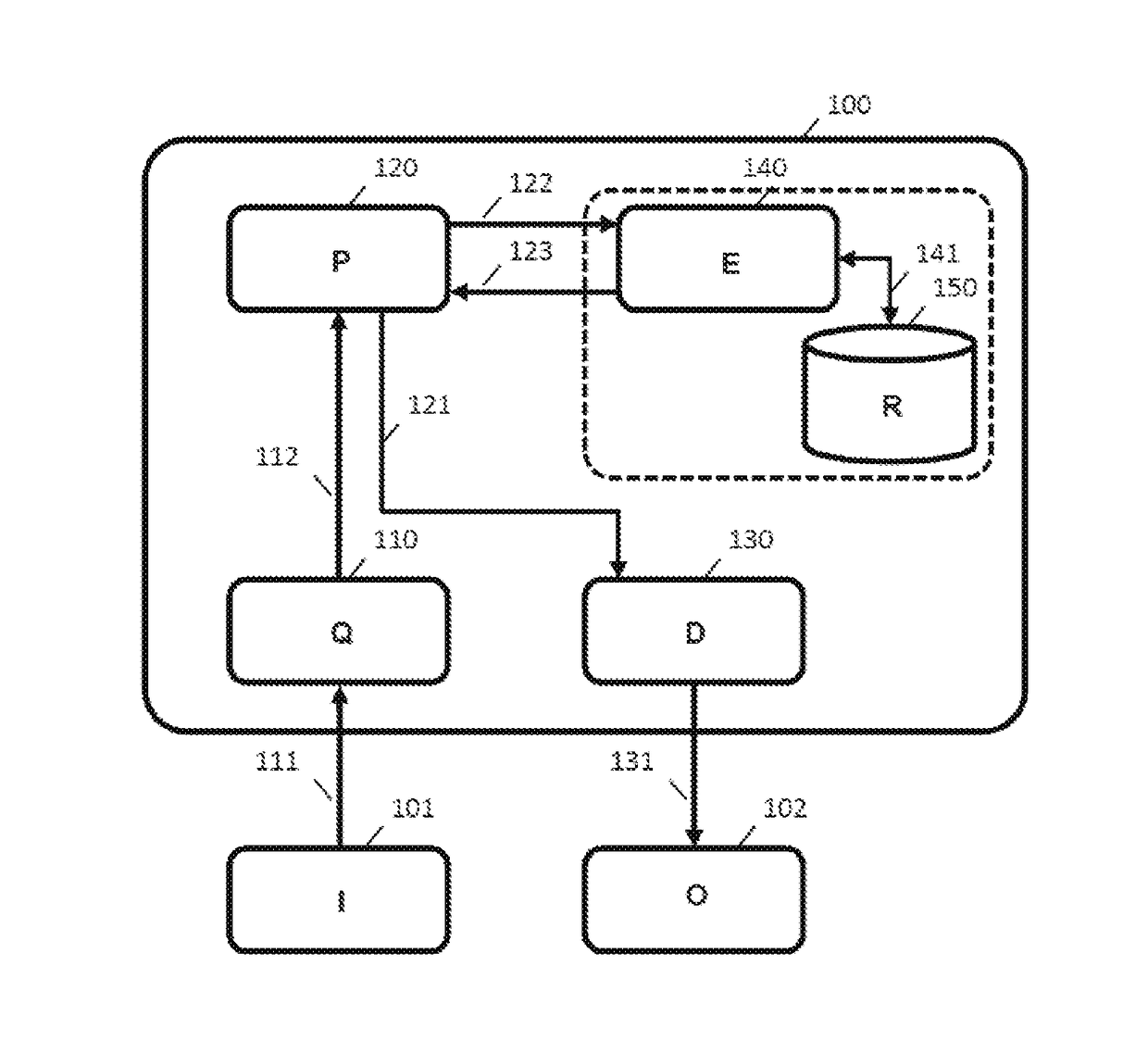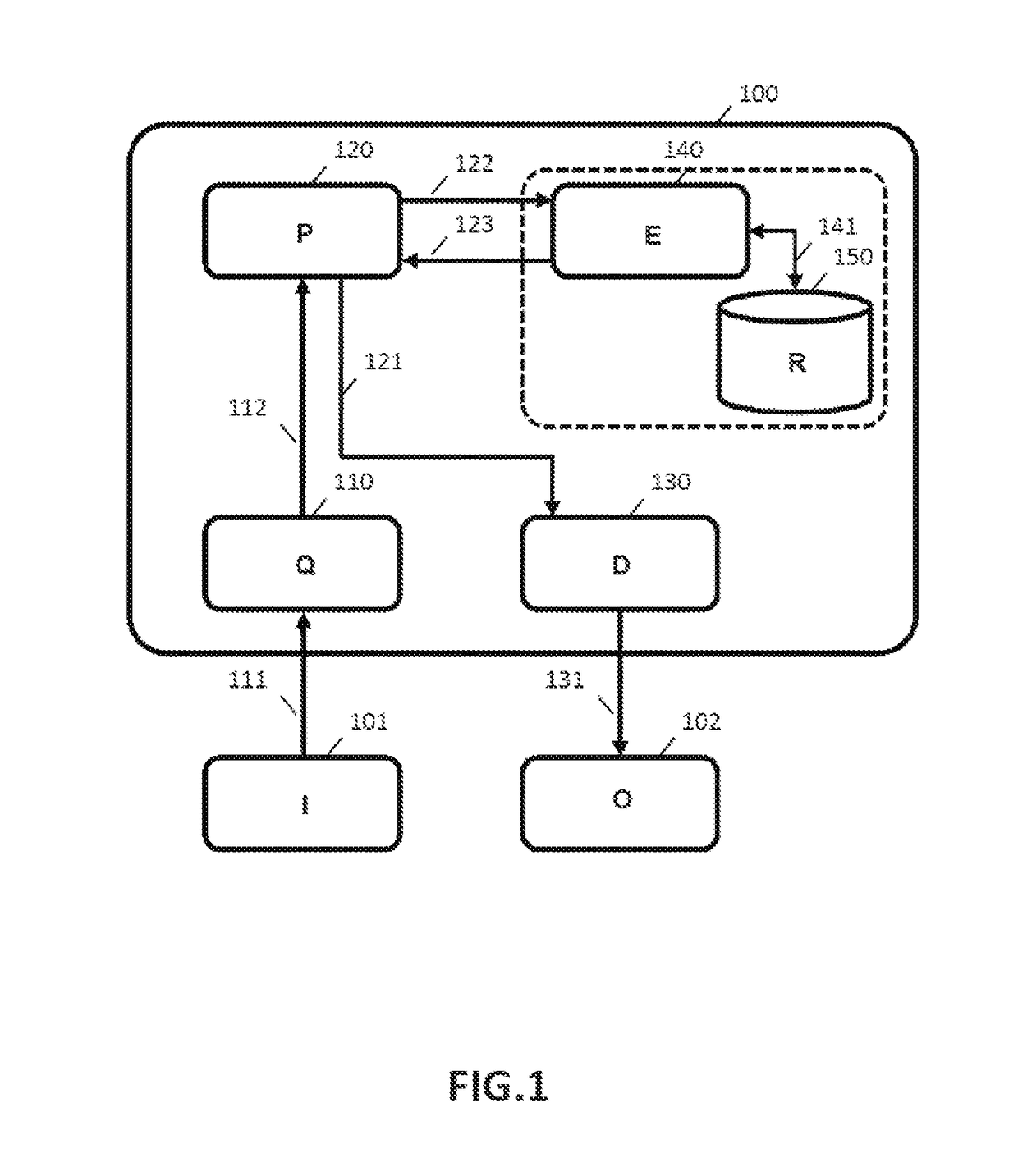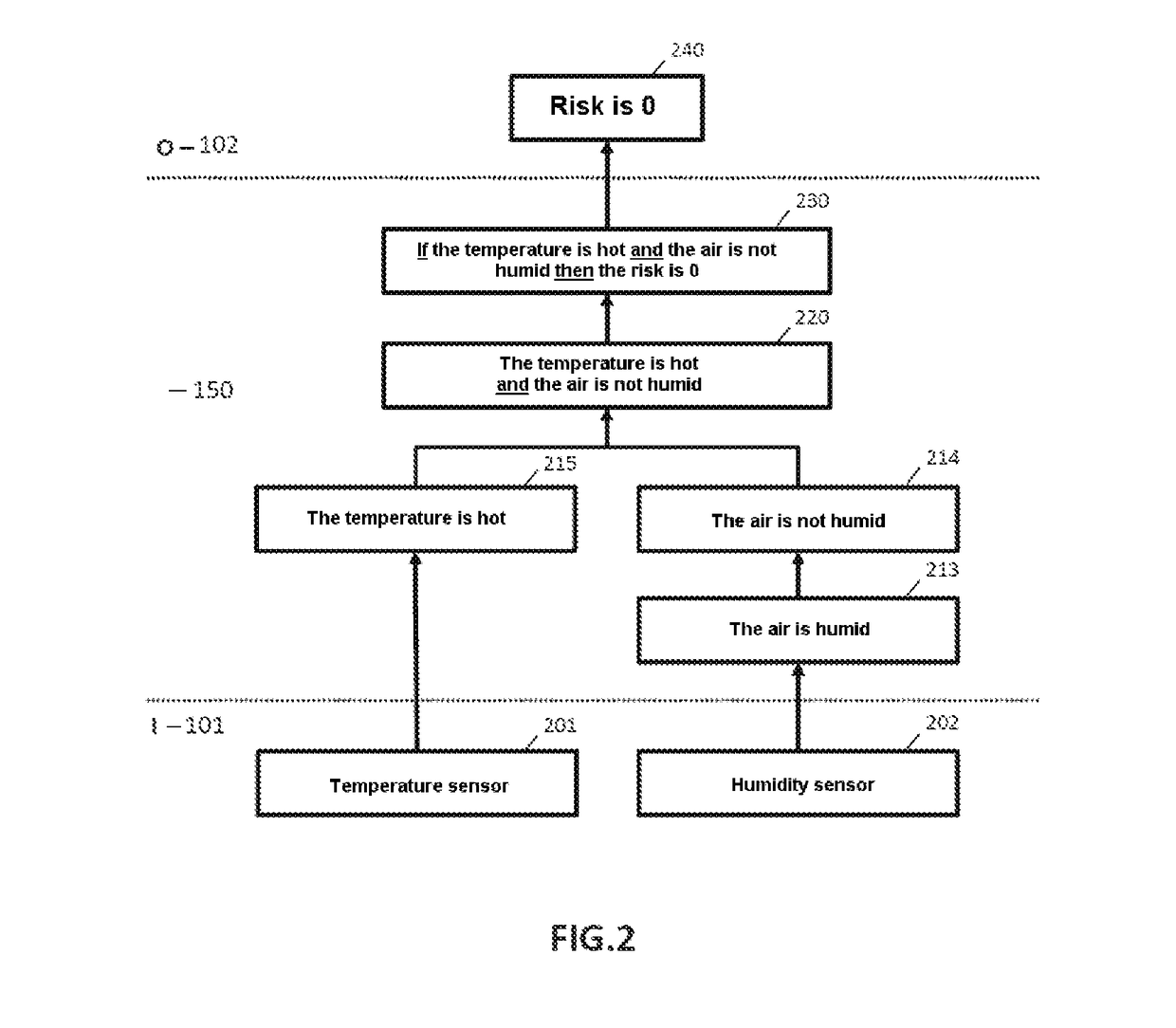Software architecture for expert system
a software architecture and expert system technology, applied in the field of artificial intelligence, can solve the problems of reducing the cognitive effort of users, increasing the complexity of operators, and requiring reevaluation of all rules, so as to facilitate human-machine interactions, reduce the complexity of procedures, and reduce the complexity of user-interactions
- Summary
- Abstract
- Description
- Claims
- Application Information
AI Technical Summary
Benefits of technology
Problems solved by technology
Method used
Image
Examples
Embodiment Construction
[0021]Generally, a rules-based system is a tool capable of reproducing the cognitive mechanisms of an expert, in a particular field. More specifically, an expert system is software capable of answering questions, by performing a reasoning based on known facts and rules. It can be used in particular as a decision aid tool. An expert system breaks down into three parts: a facts base, a rules base and an inference engine. The inference engine is capable of using facts and rules to produce new facts, until it arrives at the response to the expert question posed. An expert system can rely on formal logic mechanisms and use deductive reasoning. It can for example rely on the logic of propositions (“0 order logic”), or else the logic of first order predicates (“1st-order logic”). Fuzzy logic techniques can also be used.
[0022]The algorithms for performing the computation by inference are various and can in particular be specific to the nature of the logic which is implemented. For example, ...
PUM
 Login to View More
Login to View More Abstract
Description
Claims
Application Information
 Login to View More
Login to View More - R&D
- Intellectual Property
- Life Sciences
- Materials
- Tech Scout
- Unparalleled Data Quality
- Higher Quality Content
- 60% Fewer Hallucinations
Browse by: Latest US Patents, China's latest patents, Technical Efficacy Thesaurus, Application Domain, Technology Topic, Popular Technical Reports.
© 2025 PatSnap. All rights reserved.Legal|Privacy policy|Modern Slavery Act Transparency Statement|Sitemap|About US| Contact US: help@patsnap.com



